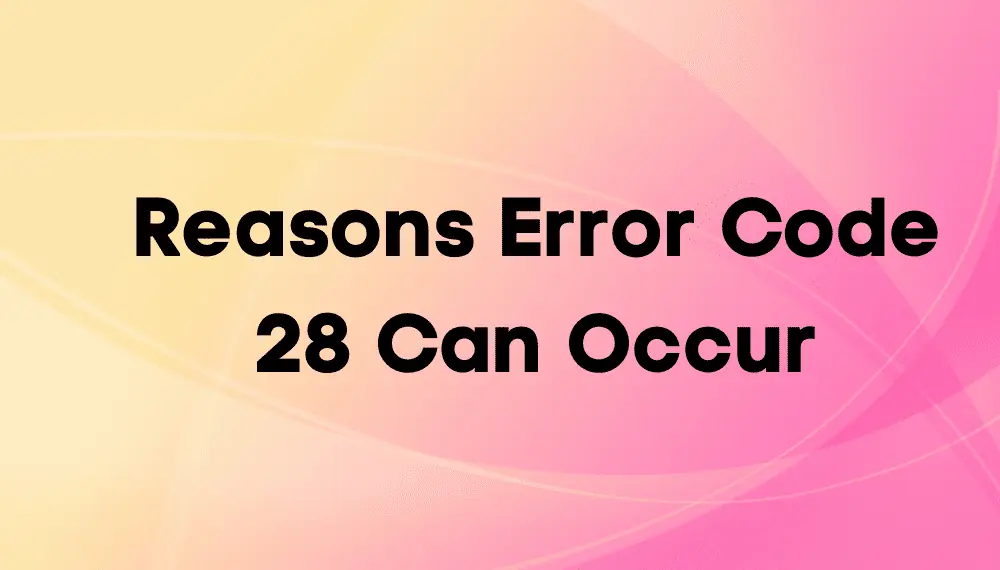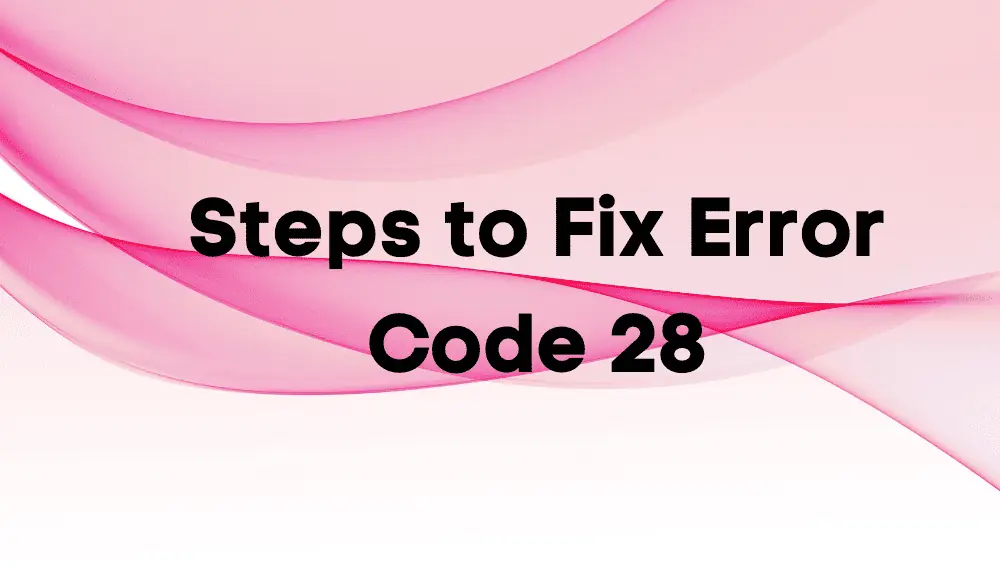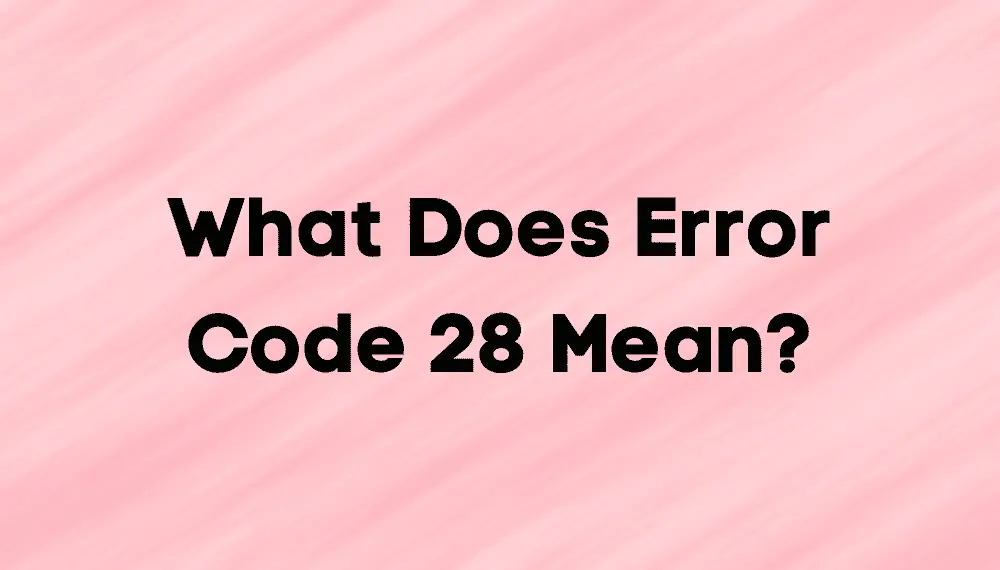While credit and debit card payments have undoubtedly revolutionized the way we do business, occasional glitches can disrupt the seamless flow of transactions. Error Code 28 is just another common code that we will understand in this article. This article will explain what “File Unavailable” means and, more importantly, how to rectify it.
What is an Error Code?
An error code is a crucial numerical identifier that flags a failed transaction in credit card payment processing. When a payment attempt is unsuccessful, this code becomes the key to understanding why the transaction was declined. It serves as a diagnostic tool, providing valuable information about the specific cause of the refusal.
By interpreting the error code, businesses and merchants can pinpoint the underlying issue that led to the transaction failure. Armed with this knowledge, they can take appropriate measures to resolve the problem and ensure a smoother experience for both their business and the customer. Error codes serve as a bridge between the complex inner workings of payment processing systems and the need for clear and actionable insights into transaction failures, ultimately aiding in the optimization of the payment process and customer satisfaction.
What Does Error Code 28 Mean?
Error Code 28 indicates that, during a transaction, the required file is temporarily unavailable. This error typically arises either in the initial stages of the transaction process or during the authorization phase. When a customer presents their credit card for payment, whether through an eCommerce site, a point-of-sale (POS) terminal swipe, or by providing the card details over the phone, the merchant initiates a request for payment authorization.
At this point, the payment processor forwards the request to the card association, which, in turn, sends it to the issuing bank. It is during this crucial authorization process that the Code 28 error occurs, signifying a difficulty in promptly accessing the necessary information from the card-issuing bank. Fortunately, this error is transient in nature, and the recommended course of action is to retry the transaction. By doing so, the chances are high that the file will become available, allowing the transaction to proceed successfully without further hindrance.
Reasons Error Code 28 Can Occur

Error Code 28 can occur due to various reasons, and some of the common causes include:
Network or Connectivity Issues
Temporary network outages, poor internet connections, or communication problems between the payment terminal and the payment processor can result in Error Code 28.
Bank Server Delays
Delays or technical issues on the card-issuing bank’s server can lead to the unavailability of the required authorization information, triggering the error.
Insufficient Funds
If the cardholder’s account does not have enough funds to cover the transaction amount, the issuing bank may decline the authorization, causing Error Code 28.
Expired or Blocked Card
An expired or blocked credit/debit card can prevent successful authorization and lead to an error.
Incorrect Card Details
Entering incorrect card information, such as an invalid card number, expiration date, or CVV code, can result in failed authorization and the appearance of Error Code 28.
Fraud Detection
In some cases, the issuing bank’s fraud detection systems may flag a transaction as suspicious, leading to a declined authorization and the generation of Error Code 28.
System Glitches
Technical glitches or software issues in the payment processing system can also cause the error to occur.
Overloaded Payment System
During peak times or high transaction volumes, the payment system may become overloaded, leading to delayed responses and potential Error Code 28 occurrences.
Incompatibility or Outdated Software
Outdated or incompatible software components, including device drivers, can cause communication problems and trigger error.
Payment Gateway Problems
Issues with the payment gateway used by the merchant to process transactions can also contribute to Error Code 28.
It’s important to note that Error Code 28 is usually temporary and can often be resolved by retrying the transaction. However, if the problem persists, it may require further investigation and assistance from payment service providers or the card-issuing bank.
Steps to Fix Error Code 28

Encountering an error code 28 during payment processing can be frustrating, but fear not, as it is often a temporary issue with a straightforward resolution. By following these steps, you can troubleshoot and address the problem effectively, ensuring a smoother payment experience for both your business and your customers.
Be Patient and Retry
As mentioned earlier, error code 28 is typically temporary, and the first thing you should do is exercise a bit of patience. Wait for a moment and then attempt the transaction again. In many cases, the error will resolve itself, and the transaction will go through without any further issues.
Contact the Issuing Bank
If the error persists after retrying the transaction, it’s time to take the next step. Contact the issuing bank associated with the credit or debit card involved in the transaction. The issuing bank can provide valuable insights into the cause of the error and offer guidance on how to proceed. You can find the contact information for the issuing bank on the back of the card or on the bank’s website.
Check with the Payment Processor
Before reaching out to the issuing bank, consider checking with your payment processor. They might be able to provide additional information about the error or offer assistance in resolving the issue. Your payment processor plays a crucial role in the transaction process, and they might be aware of any technical glitches or temporary disruptions that could be causing the error code 28.
Inform the Customer
While you’re working on resolving the error, it’s essential to keep the customer informed about the situation. If you are unable to make immediate contact with the issuing bank or the payment processor, politely explain the situation to the customer. Inquire if they have an alternative form of payment available, as this can help ensure a smooth checkout process and maintain customer satisfaction.
Verify Payment Gateway and Connectivity
In some cases, the error code 28 may be related to issues with the payment gateway or connectivity problems between your point-of-sale system and the payment processor. Verify that your payment gateway is functioning correctly and your internet connection is stable.
Seek Technical Support
If the error persists despite all efforts, it may be time to seek technical support from your payment service provider or an IT professional. They can conduct more in-depth investigations into the issue, identify potential system glitches or compatibility problems, and offer tailored solutions to fix the error.
While encountering error code 28 can be inconvenient, understanding its temporary nature and following these steps can help you resolve the issue promptly. By staying informed about the payment processing system and seeking appropriate support when needed, you can provide a seamless payment experience for your customers and reduce the likelihood of losing sales due to errors.
How Can Businesses Deal with Error Code 28

Dealing with error code 28 in payment processing can be a challenge for businesses, but with the right approach, it can be effectively managed. Here are some strategies that businesses can use to handle error code 28:
Customer Communication
When a customer encounters error code 28 during a transaction, it’s essential to communicate with them promptly and courteously. Inform the customer about the situation, explain that the error is temporary, and reassure them that you are working to resolve the issue. Provide alternative payment options, if possible, so that the customer can proceed with the transaction smoothly.
Retry the Transaction
As error code 28 is often temporary, businesses should attempt to process the transaction again after a short interval. In many cases, the error will clear, and the payment will go through successfully.
Contact the Issuing Bank
If retrying the transaction doesn’t resolve the issue, businesses should contact the issuing bank associated with the customer’s credit or debit card. The issuing bank can provide insights into the cause of the error and may offer guidance on how to proceed.
Check with the Payment Processor
Before contacting the issuing bank, businesses should check with their payment processor. The payment processor may have information about any temporary disruptions or technical glitches that could be causing the error. They may also provide additional support in troubleshooting and resolving the issue.
Monitor Payment Gateway and Connectivity
Regularly monitor the payment gateway and ensure that it is functioning correctly. Verify there are no connectivity issues between the payment terminal or online platform and the payment processor. Unstable internet connections can sometimes trigger error code 28, so it’s essential to maintain a reliable connection.
Seek Technical Support
If the error persists or if there are indications of technical issues within the payment system, seek technical support from the payment service provider or an IT professional. They can conduct a thorough investigation, identify any system glitches or compatibility problems, and implement appropriate solutions.
Train Staff on Troubleshooting
Ensure your staff is well-trained in dealing with various error codes, including code 28. Educate them about the possible causes of the error and the steps to take for resolution. Having knowledgeable staff can help streamline the troubleshooting process and provide better customer service during such incidents.
Maintain Customer Records
Keep records of transactions and error occurrences, including the date, time, and payment details. This information can be valuable for identifying patterns or recurring issues and can aid in resolving similar problems in the future.
Stay Informed About Payment Processing Updates
Stay updated with the latest information from your payment service provider regarding system updates, software upgrades, or potential issues that may affect transactions. Being informed can help you anticipate and address potential problems proactively.
While encountering error code 28 can be disruptive; businesses can effectively deal with it by staying patient, communicating with customers, and taking appropriate steps to resolve the issue promptly. By maintaining a proactive approach and seeking support when needed, businesses can ensure a smoother payment experience for their customers and mitigate the impact of such errors on their operations.
Final Words
Error code 28 may be a temporary and unexpected hiccup in payment processing, but with the right approach, businesses can navigate through it effectively. Patience and clear communication with customers are vital in managing such errors, as they often resolve themselves with a simple retry. Should the issue persist, reaching out to the issuing bank and payment processor can provide valuable insights and assistance in troubleshooting.
Keeping staff well-trained in handling error codes and maintaining reliable payment gateway connectivity are essential for a seamless payment experience. By staying informed about payment processing updates and seeking technical support when necessary, businesses can swiftly resolve error code 28 and ensure smoother transactions, bolstering customer satisfaction and bolstering their overall operational efficiency.
Ultimately, being well-prepared to handle such situations can help businesses maintain a strong footing in the competitive landscape while delivering excellent service to their valued customers.
Frequently Asked Questions (FAQs)
Is error code 28 a serious issue, and should I be concerned about it?
Error code 28 is usually a temporary and common issue in payment processing. While it can be inconvenient, it is not generally a cause for significant concern. Most of the time, retrying the transaction will resolve the error. If the issue persists, contacting the issuing bank or payment processor can help identify and address the underlying problem.
What should I do if I encounter error code 28 during an online transaction?
If you encounter error code 28 during an online transaction, the first step is to wait for a moment and then attempt the transaction again. If the error persists, check your internet connection and try again. If the problem continues, consider using an alternative payment method or contacting your payment service provider for assistance.
Why did my payment get declined with error code 28 when I have sufficient funds in my account?
While having sufficient funds is essential, error code 28 may be triggered by various factors beyond the available balance. It could be due to a technical issue, an expired card, or an error in the payment system. To determine the exact cause, contacting the issuing bank or payment processor is recommended.
Can error code 28 be prevented, or is it entirely random?
Error code 28 is often related to temporary issues in payment processing, and while it can't be entirely prevented, businesses can take measures to reduce its occurrence. Ensuring a stable internet connection, using updated software, and maintaining communication with the payment processor can help minimize the likelihood of encountering this error.
What if retrying the transaction doesn't resolve error code 28?
If retrying the transaction doesn't resolve error code 28, it's essential to reach out to your payment processor or the issuing bank for further assistance. They can help diagnose the issue, offer solutions, and ensure a successful transaction.
Are there any other error codes similar to code 28 that I should be aware of?
Yes, there are various error codes in payment processing that indicate different issues. Some common ones include error code 14 (Invalid Card Number), error code 51 (Insufficient Funds), and error code 54 (Expired Card). Being familiar with these codes can help you address transaction-related problems effectively.

